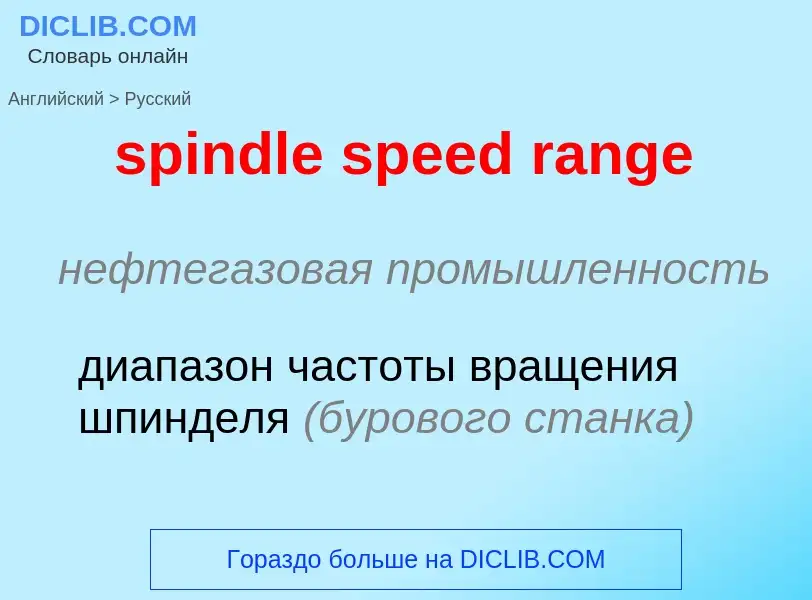Перевод и анализ слов искусственным интеллектом
На этой странице Вы можете получить подробный анализ слова или словосочетания, произведенный с помощью лучшей на сегодняшний день технологии искусственного интеллекта:
- как употребляется слово
- частота употребления
- используется оно чаще в устной или письменной речи
- варианты перевода слова
- примеры употребления (несколько фраз с переводом)
- этимология
spindle speed range - перевод на русский
нефтегазовая промышленность
диапазон частоты вращения шпинделя (бурового станка)
медицина
митотическое веретено
общая лексика
метафазная пластинка
Определение
Википедия

The phrase speeds and feeds or feeds and speeds refers to two separate velocities in machine tool practice, cutting speed and feed rate. They are often considered as a pair because of their combined effect on the cutting process. Each, however, can also be considered and analyzed in its own right.
Cutting speed (also called surface speed or simply speed) is the speed difference (relative velocity) between the cutting tool and the surface of the workpiece it is operating on. It is expressed in units of distance across the workpiece surface per unit of time, typically surface feet per minute (sfm) or meters per minute (m/min). Feed rate (also often styled as a solid compound, feedrate, or called simply feed) is the relative velocity at which the cutter is advanced along the workpiece; its vector is perpendicular to the vector of cutting speed. Feed rate units depend on the motion of the tool and workpiece; when the workpiece rotates (e.g., in turning and boring), the units are almost always distance per spindle revolution (inches per revolution [in/rev or ipr] or millimeters per revolution [mm/rev]). When the workpiece does not rotate (e.g., in milling), the units are typically distance per time (inches per minute [in/min or ipm] or millimeters per minute [mm/min]), although distance per revolution or per cutter tooth are also sometimes used.
If variables such as cutter geometry and the rigidity of the machine tool and its tooling setup could be ideally maximized (and reduced to negligible constants), then only a lack of power (that is, kilowatts or horsepower) available to the spindle would prevent the use of the maximum possible speeds and feeds for any given workpiece material and cutter material. Of course, in reality those other variables are dynamic and not negligible, but there is still a correlation between power available and feeds and speeds employed. In practice, lack of rigidity is usually the limiting constraint.
The phrases "speeds and feeds" or "feeds and speeds" have sometimes been used metaphorically to refer to the execution details of a plan, which only skilled technicians (as opposed to designers or managers) would know.


![sfm]]) at the outer diameter of the cutter, called the "cutting speed", "surface speed", or simply the "speed" by machinists. The arrow colinear with the slot that has been milled represents the linear velocity at which the cutter is advanced laterally (usually mm/min or inch/min for milling; may also be measured as mm/rev or inch/rev). This velocity is called the "feed" by machinists. sfm]]) at the outer diameter of the cutter, called the "cutting speed", "surface speed", or simply the "speed" by machinists. The arrow colinear with the slot that has been milled represents the linear velocity at which the cutter is advanced laterally (usually mm/min or inch/min for milling; may also be measured as mm/rev or inch/rev). This velocity is called the "feed" by machinists.](https://commons.wikimedia.org/wiki/Special:FilePath/StimUmfangsfraesen2B.png?width=200)


